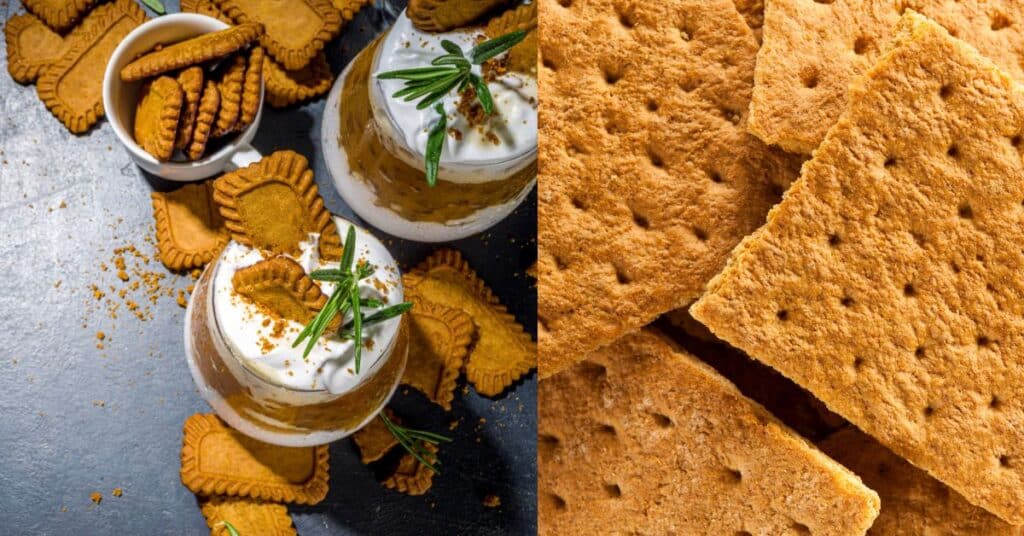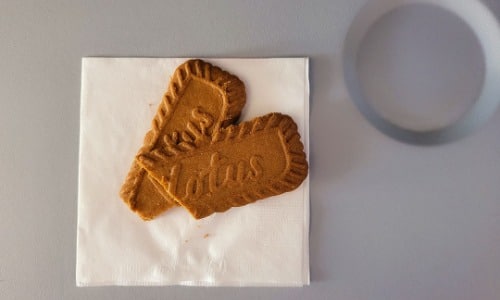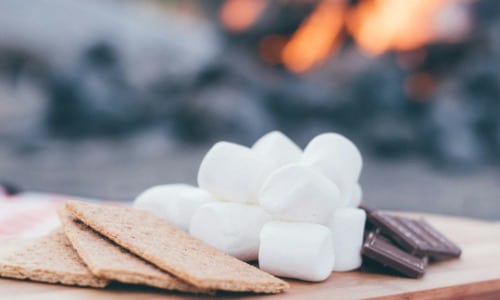When you think of the perfect companion for your coffee or a go-to snack for your outdoor adventures, you may find yourself reaching for a pack of cookies or crackers. Among the shelves of your local grocery store, Biscoff cookies and graham crackers stand out as popular choices. They both offer a unique taste experience, but each brings its own flavor and texture to the table. Biscoff cookies, with their deep caramelized taste and European origins, contrast the homey, honey-touched sweetness of the classic American graham cracker.

Delving into their ingredients, you’ll find that Biscoff cookies are a delightful mix that includes flour, sugar, and a distinct set of spices that contribute to their notable flavor. On the other hand, graham crackers are made primarily with graham flour that provides a subtle, nutty sweetness accented by a hint of honey. Whether you prefer the crispy, crunchy texture of a graham cracker or the rich, smooth bite of a Biscoff cookie, it’s clear that these snacks have secured their place in our pantries for their versatility and flavor.
These treats aren’t just for snacking on their own; they also serve as key ingredients in a variety of recipes. Biscoff cookies can be crushed into a spiced, aromatic crust for cheesecakes, while graham crackers are the foundation of the classic s’mores and numerous pie bases. Your culinary creativity can take flight, whether you’re layering them into a buttery batch of bars or simply dunking them into your favorite beverage.
Culinary Uses and Pairings
In this section, you’ll explore the delightful ways Biscoff cookies and Graham crackers enhance various desserts and snacks.
Biscoff in Dessert Recipes

Biscoff cookies offer a unique, spiced caramel flavor that blends perfectly with creamy desserts. They are a popular choice for incorporating into cheesecake bases or as a crumbled topping for ice cream. Here’s how you can use Biscoff cookies to elevate your sweet dishes:
- Pie Crusts: Crush Biscoff cookies to create a flavorful base for your cheesecakes or cream pies.
- Dessert Toppings: A sprinkling of crushed cookies adds a touch of spice to your ice cream or can be stirred into your favorite recipe for a textured treat.
In a stroke of culinary genius, Biscoff cookie butter has emerged as a versatile ingredient. It can be spread over toast for a quick snack or swirled through brownie batter for an indulgent flavor.
Graham Crackers in Classic American Treats

Graham crackers are a staple in American treats due to their honeyed sweetness and crisp texture. Let’s look at some traditional and delicious ways to use Graham crackers:
- S’mores: Pair them with marshmallows and chocolate to create the quintessential campfire snack.
- Cheesecakes & Pies: Use crushed Graham crackers mixed with melted butter for a simple and tasty pie crust.
When crafting sandwiches for an afternoon snack, Graham crackers filled with a smear of chocolate or peanut butter can satisfy a sweet tooth.
Nutritional Profiles and Health Considerations
When comparing Biscoff cookies to Graham crackers, you’ll want to consider their nutritional impact, particularly looking at calorie and sugar content along with their whole grain and fiber contributions.
Calorie Content and Sugar Levels
- Biscoff Cookies:
- Calories: Around 150 calories per 4 cookies
- Sugar: Approximately 11 grams per serving
- Graham Crackers:
- Calories: Roughly 130 calories per 2 full cracker sheets
- Sugar: About 8 grams per serving
Biscoff cookies typically contain higher sugar levels, making Graham crackers a slightly lower-calorie option. You should take note of this, especially if you’re monitoring your sugar intake.
Whole Grains and Fiber Content
- Biscoff Cookies:
- Whole Grains: None; made primarily from refined flour
- Fiber: Minimal; less than 1 gram per serving
- Graham Crackers:
- Whole Grains: Present; often made with whole-grain flour
- Fiber: Higher; around 1 to 2 grams per serving
Graham crackers usually provide more fiber due to their whole-grain components and can be a moderately healthier alternative if fiber intake is a priority for you. Additionally, for those following a vegan diet, many Graham crackers are vegan, but you’ll need to verify individual brands, as some may contain honey. Biscoff cookies are typically vegan as well.
Physical Characteristics
When you’re exploring the world of sweet treats, the physical characteristics of Biscoff cookies and graham crackers distinctly set them apart. Your experience with each one’s texture and appearance significantly influences your sensory enjoyment.
Texture Analysis
Biscoff Cookies: You’ll find that Biscoff cookies boast a uniquely crunchy texture that’s pleasantly firm. They’re known for a caramelized crispness with each bite that shatters lightly on your palate. Unlike some cookies, they are not chewy or soft but maintain a sturdy crunch throughout.
- Chewiness: Non-existent
- Crunch Factor: High
- Surface: Generally smooth
Graham Crackers: In contrast, graham crackers offer a more airy crunch, less intense than Biscoff’s. They are designed to be slightly flaky, with a grainy texture that’s more pronounced. They’re not as hard as Biscoff cookies and can be described as semi-soft.
- Chewiness: Mild
- Crunch Factor: Moderate
- Surface: More textured, with visible grain
Variations in Shape and Size
Biscoff Cookies: You’ll notice that Biscoff cookies come primarily in one shape—a thin, rectangular form with rounded edges. The consistency in size and shape makes them instantly recognizable. Any variations usually stay true to the thin and sophisticated silhouette:
- Shape: Rectangle (standard)
- Size: Uniform
- Thickness: Thin
Graham Crackers: Your typical graham crackers, on the other hand, display more variation. They often come as large rectangles that are scored to be easily split into squares. Some versions come in fun shapes, especially themed ones for children. The thickness can vary slightly but generally remains on the thinner side:
- Shape: Rectangle (standard), may vary
- Size: Larger but easily divisible
- Thickness: Usually thin, can vary
Historical and Cultural Significance
Biscoff cookies and graham crackers both have rich histories that reflect their origins and cultural impact. From Biscoff’s European beginnings to the religious undertones of graham crackers in America, each has a unique story.
Biscoff’s European Roots
Biscoff cookies originated in Belgium and have become a symbol of the country’s culinary expertise. Lotus Bakeries, the company founded in 1932, introduced this caramelized biscuit to the public, becoming a staple treat paired with coffee. The blend of spices and the unique caramelization process is rooted in European baking tradition, offering you a taste of Belgian history in every bite. Over the years, Biscoff’s signature flavor and texture have turned it into a globally recognized brand, synonymous with Belgian culture.
Graham Crackers’ American Heritage
Your familiar graham cracker has a distinctly American story, with its origins dating back to the early 19th century. These crackers were made from graham flour, a type of whole wheat flour, and championed by Sylvester Graham, a Presbyterian minister who advocated for dietary reform. The Graham cracker was part of his movement to promote nutrition and temperance in the United States. Over time, this simple, sweetened cracker has transcended its original health food purpose to become a favorite ingredient in American traditions like ‘s’mores’ and pie crusts, reflecting its cultural significance across generations.
Frequently Asked Questions

In this section, you’ll find answers to common questions about the differences between Biscoff cookies and graham crackers, their origins, ingredients, and unique uses in various recipes.
What distinguishes Biscoff cookies from graham crackers in terms of taste and texture?
Biscoff cookies have a deep caramel flavor and a hint of cinnamon, with a crisp, crunchy texture. Graham crackers, on the other hand, taste like honey and molasses and have a firm but crumbly texture that softens more readily with moisture.
Can you tell me about the origin and cultural significance of Biscoff cookies?
Biscoff cookies originated in Belgium and are also known as speculoos. They have a rich history tied to St. Nicholas Day celebrations and have gained international popularity, partly due to being served on airlines.
How do the key ingredients of Biscoff cookies compare to those in graham crackers?
Biscoff cookies are made with wheat flour, sugar, and a specific blend of spices including cinnamon, whereas graham crackers are made from graham flour, a type of whole wheat flour, and are sweetened with honey or molasses.
What makes Biscoff cookies a preferred choice for certain recipes over graham crackers?
Their unique caramel and spiced flavor profile make Biscoff cookies a sought-after ingredient for recipes that require a more complex, bold taste, especially in no-bake desserts and cookie butter spreads.
In what ways are Biscoff cookies incorporated into desserts differently than graham crackers?
Biscoff cookies are often ground into a fine crumb for cheesecake bases or turned into a spread for toppings and fillings, offering a different flavor dimension compared to the sweet and wheaty notes of graham crackers.
What are some popular desserts that can be made using Biscoff cookies as an alternative to graham crackers?
Biscoff cookies can replace graham crackers in recipes like pie crusts, s’mores, and truffles, providing a unique twist on traditional American desserts with their signature European spiced flavor.
